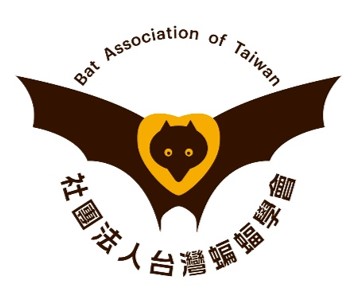蝙蝠研究
1999_新化地區高頭蝠(Scotophilus kuhlii)之活動模式與食性分析_龍佩君
出版年份:1999
研究生:龍佩君
分類:碩士論文
題目:新化地區高頭蝠(Scotophilus kuhlii)之活動模式與食性分析
Title:Activity Patterns and Food Habits of the Yellow House Bat(Scotophilus kuhlii) in Hsinhwa Area
摘要:
本研究自1997 年10 月至1998 年9 月對新化地區高頭蝠的整夜活動模式進行每月1 至2 次觀察,高頭蝠在此處是以華盛頓椰子樹的葉叢為日間棲所,在5 月至8 月的生殖育幼期間,蝠群為雌蝠及幼蝠所組成的育幼群。自黃昏至隔天天亮,分別紀錄離樹、返樹及繞飛等三種活動的時間及隻數,並分析其季節性之變化;另外收集高頭蝠之排遺,以期瞭解其食性在全年間的變動情形,並比較排遺在不同性別、生長情形及生殖狀況之間的差異。
整夜飛行活動模式皆為單峰式,但在秋冬兩季,夜間活動集中於上半夜;而春夏季時,則是整夜皆有活動紀錄。同時,整夜飛出量隨著溫度升高有增加之趨勢。所觀察的第一隻高頭蝠在黃昏離樹時的時間平均為日落後4.03 分鐘,離樹時間也與日落時間呈現高度正相關(p<0.01)。
在排遺量的比較上,雌蝠全年的平均排遺量大於雄蝠,且在生殖育幼期之雌蝠的排遺量高於非生殖育幼期的雌蝠。排遺內含物的定量分析上,共分析了325 顆高頭蝠的排遺,其中可鑑定出共6 個目別(鞘翅目、雙翅目、半翅目、鱗翅目、同翅目及膜翅目)的昆蟲及少部分非昆蟲類的食物類別。由排遺內含物相對重要性及出現頻度的結果顯示鞘翅目、雙翅目及半翅目為新化地區高頭蝠的主要食物組成。在生殖育幼期間,雌蝠取食大量的食物,但是卻比非生殖時期取食較少比例的鞘翅目與雙翅目,顯示雌蝠為滿足生殖育幼期高能量的需求,食性可能由較專一性轉為較隨機性之取食策略。
Abstract:
Between October 1997 and September 1998, seasonal activity patterns and food habits of the yellow house bat(Scotophilus kuhlii) were studied in Shinhwa area. These bats roost at the withered and yellow leaves of the Washingtonia filifera in the study site. Between May and August only maternity colonies were found, including adult females and their young. The numbers of bats leaving out, entering in, and turning around the roosting trees were recorded throughout the night for once or twice per month for monitoring their seasonal activity. Feces collected from the bats were analyzed in the laboratory for comparisons among different sexes, adults and young, and reproductive status(p<0.01).
The most performed activity pattern was unimodality, peaked right after sunset. However, the bats were still active almost all night long in spring and summer, but they were only active before midnight in autumn and winter. There was a positive relationship between air temperature and the total number of times that bats left roosting sites per night. The average times of the first bat leaving its roosting site was 4.03 minutes after sunset, which was significantly correlated with the time of sunset.
The annual average amount of droppings collected from females was significantly greater than that of males. In the same time, droppings from pregnant and lactating females were heavier than that of nonreproductive females. Six insect orders(Coleoptera, Diptera, Hemiptera, Lepidoptera, Homoptera and Hymenoptera) and few other species were recorded in 325 droppings. According to the compositions of feces, insects from Coleoptera, Diptera and Hemiptera were the main food items of Scotophilus kuhlii in Shinhwa area. Pregnant and lactating bats ate larger amount of food than those in nonreproductive period, but fed on less percentage of insects in Coleoptera and Diptera. In order to satisfy the high energy needs, those females in reproductive stage might switch from specialized to more generalized feeding strategy than those in nonreproductive period.
